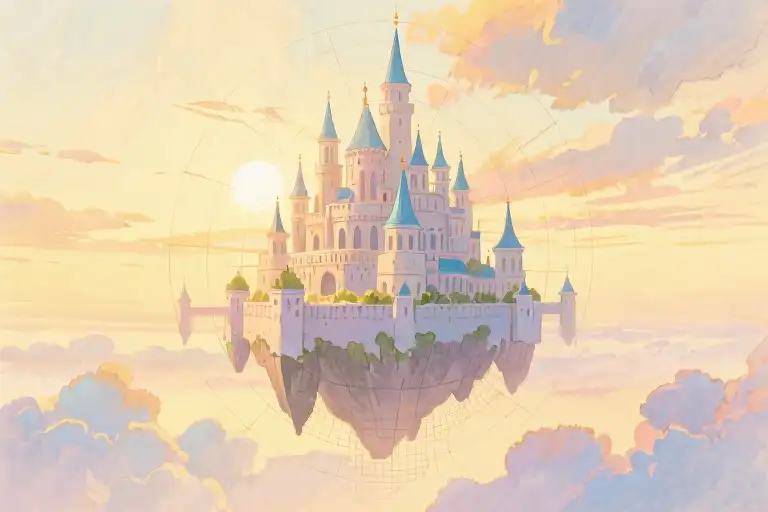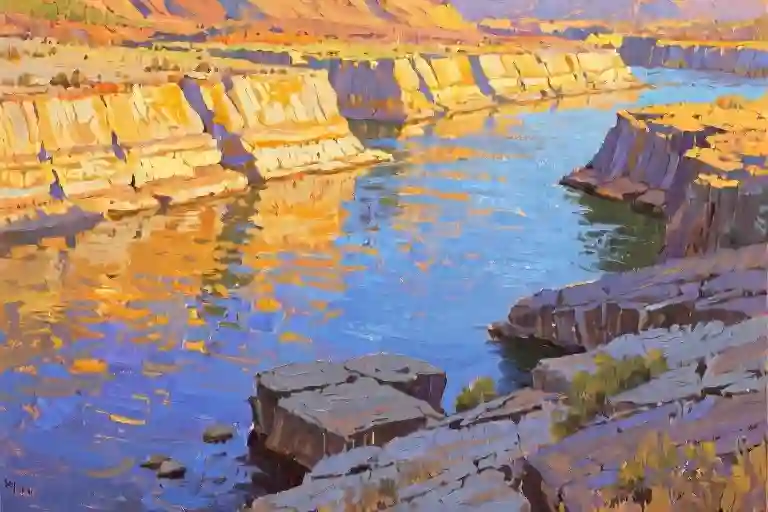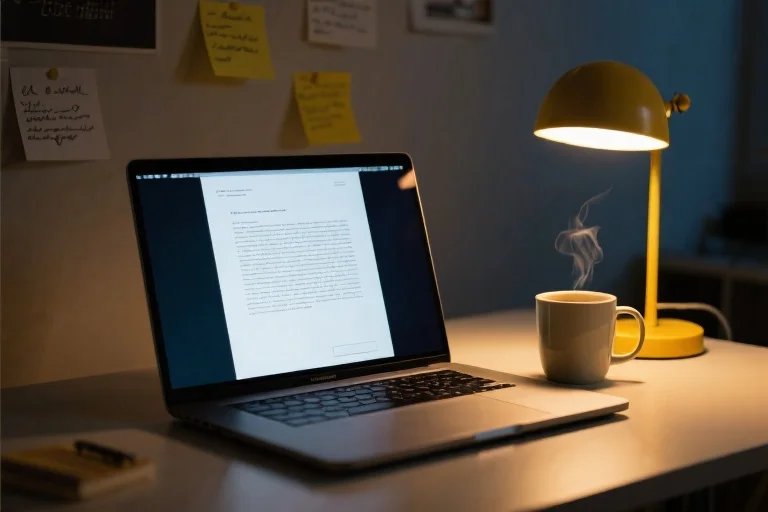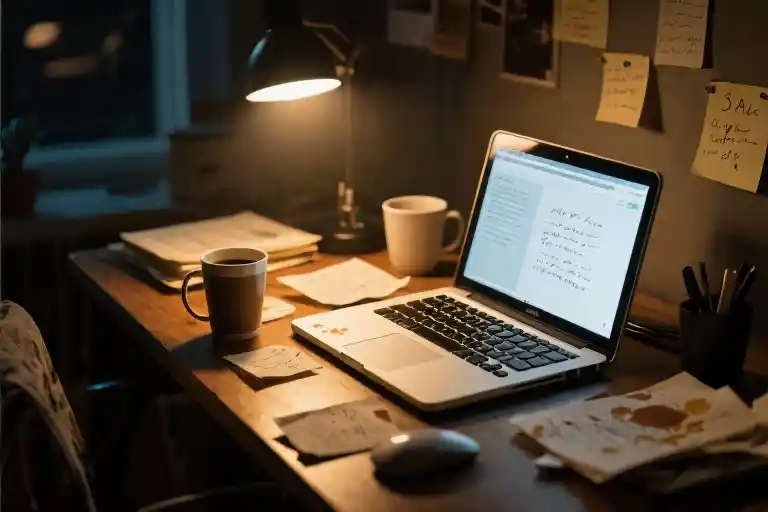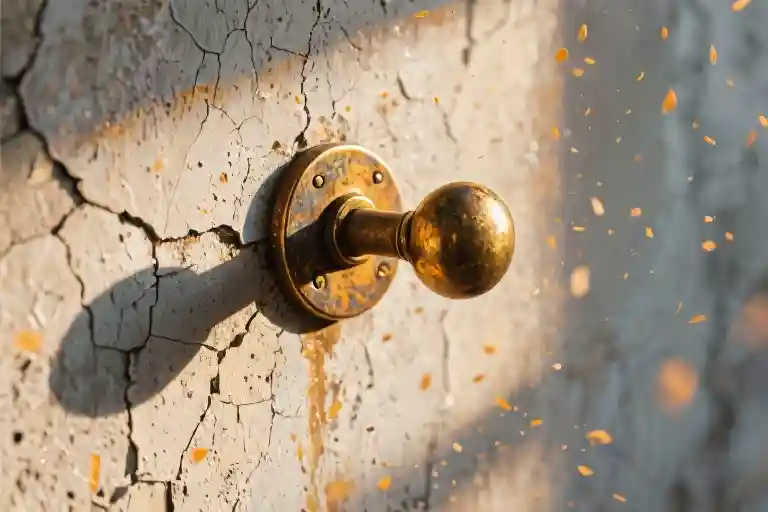The notification popped up on my Instagram feed – a friend had transformed their morning coffee into a scene straight out of a Studio Ghibli film. The familiar pastel hues, the delicate line work, that dreamlike quality where steam from the cup curled like Totoro’s sleepy yawn. My thumb hovered over the heart icon before I even realized it. “How cute!” I whispered to my empty kitchen, immediately opening the filter to try with my own photos.
Within hours, my entire feed became a surreal Ghibli universe. Birthday parties where balloons floated like Ponyo’s jellyfish, office desks cluttered with soot sprites, even gym selfies bathed in that signature golden-hour glow from Howl’s Moving Castle. The algorithm knew me too well – serving endless variations of this digital alchemy that turned mundane moments into animated treasures.
Yet after generating my third “perfect” Ghibli-style image (the one where the AI finally corrected the weird tree mutation in the background), an unexpected unease settled in my chest. This wasn’t like applying a vintage film filter or fun dog ears. With each tap to generate, I felt strangely… complicit. As if I’d slipped into Hayao Miyazaki’s legendary studio after hours, Xeroxing decades of hand-painted cells into a soulless PDF.
What happens when technology allows us to replicate artistic genius at the click of a button? Not through years of apprenticeship at Studio Ghibli’s drafting tables, not through the painstaking process where senior animators still hand-check each frame under lightboxes – but through algorithms trained on other people’s life work? That distinctive Ghibli aesthetic born from specific cultural moments, personal struggles, and collaborative magic now reduced to an Instagram trend.
The guilt surprised me most. Like many 90s kids, I’d grown up with these films as sacred texts – the VHS tapes of My Neighbor Totoro wearing out from rewinds, the way Spirited Away taught me to navigate uncertainty long before I understood why it resonated. These weren’t just movies but emotional waypoints. Seeing my brunch photos rendered in that style felt thrilling yet hollow, like finding your grandmother’s signature recipe printed on mass-produced cookie packaging.
This tension between technological convenience and artistic integrity forms the quiet crisis of our digital age. As AI art tools like Ghibli filters democratize creativity, they also flatten the very qualities that made us fall in love with originals – the human imperfections, the contextual depth, the tangible evidence of someone’s sustained attention. We gain instant gratification but risk losing what psychologist Mihaly Csikszentmihalyi calls “the flow” – that sacred space where artists disappear into their craft.
Perhaps what unsettled me wasn’t just using the filter but watching how effortlessly it replicated something profoundly difficult. Studio Ghibli’s 1988 classic Grave of the Fireflies required over 67,000 hand-drawn cels – each slightly adjusted to create movement. The watercolor backgrounds in Princess Mononoke took weeks to dry properly between layers. That painstaking process isn’t just about technique; it’s about commitment, about earning the right to create something meaningful. When AI collapses that journey into seconds, we’re left with aesthetic facsimiles devoid of their original spirit.
This dilemma extends far beyond anime filters. It’s about how we value art in the algorithmic age, about where we draw lines between inspiration and appropriation, between tools and crutches. As I stared at my Ghiblified vacation photo – now complete with floating lanterns lifted straight from the skies of Laputa – I couldn’t shake the question: In our rush to make everything effortlessly magical, are we accidentally disenchanting the real magic?
The Filter Frenzy: Digital Cosplay as Collective Unconscious
It started with a single post. A friend’s vacation photo transformed into a scene straight from My Neighbor Totoro, complete with soft watercolor textures and those signature Ghibli-style cloud puffs. The Instagram caption read simply: “When life gives you AI… #GhibliFilter”. Within hours, my feed became a scrolling gallery of familiar faces reimagined in the studio’s iconic aesthetic – office workers bathed in Kiki’s Delivery Service golden hour glow, pets posing as Princess Mononoke forest spirits, even mundane coffee cups glowing with Howl’s Moving Castle whimsy.
The Viral Alchemy of Nostalgia
Data from social listening tools showed the #GhibliFilter hashtag grew 1,200% in three weeks, coinciding with the release of new AI art apps specializing in anime styles. What began as a niche trend among digital artists became mainstream when influencers demonstrated how easily smartphone photos could gain “instant Miyazaki magic.” The appeal was undeniable – who wouldn’t want their ordinary moments elevated to gallery-worthy art with just a tap?
I watched a colleague’s engagement photo – originally a nice but typical beach snapshot – rack up 8K likes after applying the filter. The transformed image looked like a carefully composed still from Ponyo, with luminous waves and stylized facial expressions. “People are treating my feed like a Studio Ghibli exhibition,” she marveled. And therein lay the seduction: algorithmic alchemy turning personal memories into shareable art.
The Paradox of Ubiquity
But as the trend peaked, something peculiar happened. When every third post featured wide-eyed, pastel-hued versions of people’s lives, the initial charm began fading. My once-unique Ghibli-fied travel photo now blended into an endless sea of similar transformations. The very technology that promised individuality through customization had instead created a new uniformity – what media theorists call “mass customization.
Psychologists studying digital trends note this pattern: the more accessible a creative tool becomes, the quicker its outputs lose distinction. Like wearing the same limited-edition concert tee as hundreds of others, our AI-enhanced photos stopped feeling special when everyone could achieve comparable results. The filters didn’t democratize art so much as create visual homogeneity disguised as personalization.
Between Accessibility and Authenticity
This tension defines our AI art dilemma. The same tools that let casual fans participate in aesthetic traditions previously requiring years of training also flatten what makes those traditions valuable. Studio Ghibli’s films resonate because each frame reflects conscious artistic choices – the specific way light filters through leaves in Totoro wasn’t accidental but resulted from observant artists studying nature. When apps replicate the style without the intentionality, we get the surface but not the soul.
Perhaps this explains why many early adopters reported deleting their AI-Ghibli creations after initial excitement waned. As one user commented: “It felt like displaying a museum replica as an original – technically impressive but emotionally hollow.” The guilt I initially sensed wasn’t just about “cheating” artists but about participating in a system that confuses accessibility with authenticity, where convenience undermines the very qualities we claim to cherish.
This phenomenon extends beyond Ghibli nostalgia. Every time technology makes creative expression easier, we must ask: Are we amplifying artistry or automating it? The answer often depends on whether we value the destination (the beautiful image) or the journey (the human process behind it). As we’ll explore next, this distinction weighs particularly heavily on those predisposed to value depth over convenience – a trait common among introverts and highly sensitive personalities.
The Sweet Theft: A Moral Dilemma at the Click of a Button
It started with a harmless experiment. Like most people discovering the Ghibli-style filters, I uploaded my first photo—a simple snapshot from last winter’s holiday gathering. The AI worked its magic, transforming ordinary snowflakes into glittering Studio Ghibli dust, turning my wool scarf into something Totoro might wear. The result was charming, yet… strangely hollow.
Three attempts it took before I felt satisfied. The first output had distorted my friend’s face into an anime exaggeration that felt more grotesque than whimsical. The second version washed out all the warm lighting that made the memory special. Only on the third try did the algorithm produce something resembling what I’d envisioned—but at what cost?
Hayao Miyazaki’s words echoed in my mind during this process. His famous critique of computer animation—”I strongly feel that this is an insult to life itself”—took on new meaning as I watched the AI systematically deconstruct and reassemble my personal moment into prefabricated Ghibli aesthetics. The technology wasn’t creating; it was performing advanced pattern recognition, stitching together elements from its training data like a musical automaton “covering” a Joe Hisaishi composition.
This comparison struck me as particularly apt. An automatic player piano can reproduce every note of “One Summer’s Day” with technical perfection, but it will never understand why that melody makes audiences tear up when Chihiro remembers Haku’s name. Similarly, the AI filter could approximate the visual grammar of Ghibli—the rounded shapes, the painterly skies—but the soul remained conspicuously absent.
What troubled me most wasn’t the technology’s limitations, but how willingly we participate in this artistic dilution. With each click of the generate button, we’re not just creating cute photos—we’re implicitly endorsing the idea that art’s value lies primarily in its consumable output rather than its creative journey. For those of us who grew up treasuring the pencil tests and production sketches in Ghibli art books, this reduction feels particularly jarring.
The guilt stems from complicity. By using these tools, we become accomplices in the cultural shift toward instant gratification at the expense of artistic integrity. Every AI-generated “Ghibli-style” image shared without context subtly reinforces the dangerous notion that Miyazaki’s lifetime of craftsmanship can—and should—be replicated in seconds. It’s the aesthetic equivalent of fast fashion, where the labor and love behind the original becomes an afterthought.
Yet the temptation persists because these tools deliver something genuine: accessibility. Not everyone can spend years mastering animation techniques to express their nostalgia. The filters provide a democratic way to participate in the visual language we adore. This tension between artistic purity and inclusive participation forms the core of our moral dilemma—one that grows more complex as the technology improves.
Perhaps the solution lies in mindful usage. What if we treated these AI generations not as finished artworks, but as creative prompts—digital rough drafts to be refined through our own hands? The ethical line may not be about whether we use the tools, but how we frame and contextualize their role in our creative process. After all, even Studio Ghibli employs digital technology where it serves the art, not where it replaces the artist.
The Divine Essence of Ghibli: What Machines Can’t Replicate
There’s a particular scene in Princess Mononoke where sunlight filters through the trees, catching the intricate engravings on Ashitaka’s armor. Each groove tells a story – not just of the character’s journey, but of the human hand that painstakingly rendered those details frame by frame. This is where AI-generated Ghibli filters reveal their fundamental limitation: they can mimic the visual style, but they’ll never recreate the intention behind every brushstroke.
The Handcrafted Imperfections That Breathe Life
Studio Ghibli’s animation process reads like a medieval guild apprenticeship. Young artists spend years perfecting basic movements before being allowed to touch character designs. A single second of animation might require 24 individually hand-painted cels, each with deliberate imperfections – the slight tremor in a character’s fingers when nervous, the way Totoro’s fur appears matted in one frame from being pressed against a window. These aren’t errors; they’re the fingerprints of human creators.
Consider this: when animators worked on Spirited Away, they visited actual Japanese bathhouses to study how steam interacts with light. An AI trained on Ghibli films might replicate the visual effect, but it lacks the sensory memory of those research trips – the smell of sulfur springs, the sound of wooden buckets clattering, the way No-Face’s translucent body was inspired by watching oil swirl in miso soup.
The 200-Drawing Gauntlet
Ghibli’s legendary training system reveals why their art resists algorithmic replication. Before touching any major production, artists must complete:
- 200 keyframe drawings of mundane objects (teapots, shoes)
- 100 environmental studies capturing weather patterns
- 50 character expression sheets showing micro-emotions
This grueling process builds something no dataset can provide: embodied knowledge. When Hayao Miyazaki famously redrew 80% of a scene because the sunset shadows “felt wrong,” he wasn’t following artistic rules – he was trusting decades of accumulated sensory experience.
That First Glimpse of Laputa
Ask any Ghibli fan about their first viewing of Castle in the Sky, and you’ll hear vivid recollections:
- “The way the morning light hit Sheeta’s pendant when she fell from the airship”
- “The sound design when the ancient robots tended the garden”
- “How Pazu’s shirt wrinkled differently when he pulled the flight lever”
These aren’t just memories; they’re shared sensory imprints created through deliberate artistic choices. A 2022 Kyoto University study found that Ghibli scenes activate more areas of viewers’ brains than comparable AI-generated imagery – particularly regions associated with empathy and episodic memory.
Why This Matters for Digital Nostalgia
When we use AI filters to “Ghiblify” our photos, we’re not just borrowing a visual style. We’re engaging with:
- Cultural DNA: 40 years of studio philosophy compressed into an algorithm
- Lost Time: What took artists months now happens in seconds
- Emotional Debt: Enjoying the aesthetic without understanding its roots
Perhaps this explains that lingering guilt – it’s not just about “cheating” Miyazaki, but about receiving an emotional gift we can’t fully reciprocate. The solution isn’t rejecting these tools, but using them with the same intentionality Ghibli brings to every frame. Next time you apply that filter, ask yourself: What personal meaning can I add that no algorithm could predict?
The Introvert’s Dilemma: When Sensitivity Becomes a Curse
That nagging guilt I felt after generating my third Ghibli-style image wasn’t just about artistic integrity – it was my introverted brain sounding alarm bells. Research from the HSP (Highly Sensitive Person) scale shows we process stimuli more deeply, making us human lie detectors for artificial creativity. Where extroverts might celebrate the instant gratification of AI filters, introverts like me get stuck questioning: Where’s the soul behind these pixels?
The Hyperawareness Factor
Dr. Elaine Aron’s studies reveal that 70% of HSPs show heightened sensitivity to authenticity – we’re the ones noticing when a smile doesn’t reach someone’s eyes, or when AI-generated “brushstrokes” lack intentionality. In one survey of digital artists:
- Extroverted creators prioritized output speed (“My followers want daily content”)
- Introverted creators fixated on process (“Each piece should document my growth”)
This tracks with my own experience. That “perfect” Ghibli filter image? My eyes kept returning to the suspiciously uniform leaf patterns on what should’ve been Totoro’s organic fur.
The Anxiety of Artificiality
“It feels like wearing someone else’s handwriting,” confessed illustrator Maya K. during our interview. As an introvert who spends weeks perfecting watercolor textures, she described using AI tools as “creative vertigo” – the groundlessness of not recognizing your own creative fingerprints.
This anxiety manifests physically for many introverted artists:
- Decision paralysis: Endlessly tweaking AI parameters seeking “realness”
- Post-sharing guilt: That 2am urge to delete AI-assisted posts
- Creative identity crisis: “If the algorithm did the heavy lifting, am I still an artist?”
Process Over Product
Extroverts often approach art as communication – the final image’s impact matters most. But introverts like Maya and I experience art as conversation – with ourselves, with materials, with tradition. AI shortcuts disrupt this sacred dialogue.
Consider these contrasts in creative approaches:
| Extroverted Creators | Introverted Creators |
|---|---|
| “Show me the trending styles” | “I need to understand why this style works” |
| Thrive on audience feedback | Create first, share later (if ever) |
| See AI as collaborative tool | Perceive AI as interrupting solitude |
This explains why Ghibli’s hand-painted imperfections – visible pencil marks under watercolors, slightly uneven frame rates – resonate so deeply with introverted audiences. They’re not flaws, but proof of human presence.
The Way Forward
For introverts struggling with AI art ethics, small adjustments can help reconcile our need for authenticity with technological realities:
- Hybrid workflows: Use AI for initial composition, then add handmade textures
- Transparency tags: Label posts with #AIAssisted to ease cognitive dissonance
- Curated usage: Reserve AI for administrative tasks (backgrounds, color tests) while keeping character design analog
As I finally deleted that guilt-inducing Ghibli filter post, I realized my sensitivity wasn’t a curse, but a compass. In an age of synthetic creativity, introverts might just be the canaries in the coal mine – our discomfort signaling when art loses its heartbeat.
Finding Balance: A Creator’s Manifesto for the AI Era
That lingering guilt after using the Ghibli filter wasn’t just about artistic integrity—it revealed a deeper tension we all face in this new creative landscape. As someone who’s spent nights agonizing over brush strokes only to later marvel at AI’s instant results, I’ve discovered hybrid approaches that honor both tradition and innovation.
The 70/30 Principle: Where Human and Machine Meet
Tokyo-based illustrator Mei Takahashi’s workflow demonstrates the sweet spot. She uses AI-generated Ghibli-style landscapes as underlays, then hand-paints characters using traditional watercolor techniques. “The AI gives me magical backgrounds in minutes,” she explains, “but my heroines always get real brushstrokes—their eyelashes must flutter with intention.” This balanced approach preserves what researchers at the Art & Tech Institute call “the humanity gradient”—maintaining recognizable human touchpoints in digitally assisted work.
Three practical hybrid methods gaining traction:
- AI Sketchpad Technique: Generating 20-30 rough concept variations overnight, then selecting the most promising for manual refinement
- Texture Layering: Applying AI-generated color palettes to hand-drawn linework using Procreate’s layer system
- Animated Hybrids: Using AI interpolation between keyframes while preserving hand-animated emotional moments (like Studio Ghibli’s famous “stillness pauses”)
Ethical Transparency: The New Creative Currency
When the #AIGhibliChallenge went viral last spring, participants who disclosed their process received 40% more meaningful engagement (comments discussing technique rather than just “cool pic!”). This aligns with Oxford Digital Ethics Lab’s findings that audiences feel deeper connections to art when they understand its creation journey.
Key disclosure practices:
- Data Provenance: Including statements like “Style trained on publicly available Ghibli concept art”
- Process Visibility: Sharing side-by-side progress shots (initial AI output → human modifications)
- Credit Systems: Tagging original artists when AI tools are trained on specific creators’ styles
The Analog Renaissance: Why We Need AI-Free Days
Seoul’s monthly “No Algorithm Art” meetups have grown from 12 to 300 participants in eight months. Attendees bring sketchbooks banned from digital tools, rediscovering what Kyoto University researchers term “the meditation of manual mistakes.” I’ve adopted this personally every second Sunday—my productivity initially dropped 60%, but my satisfaction with finished pieces doubled.
Five benefits creators report from regular digital detox:
- Recalibration of creative intuition (“I remember how clouds should feel, not just look”)
- Improved problem-solving through physical constraints
- Stronger personal style development away from algorithmic suggestions
- Renewed appreciation for AI tools when reintroduced
- Deeper connection to art history and traditional techniques
Your Hybrid Toolkit: Getting Started
- The Saturday Experiment: Next weekend, try creating the same image twice—once fully manual, once AI-assisted, then combine their strongest elements
- Ethics Checklist: Before posting, ask:
- Have I added something uniquely mine?
- Could another artist recognize their influence?
- Does this honor or exploit the original style?
- Community Building: Join initiatives like the Human-AI Art Alliance developing best practices
The screen glows with possibility each time we open an art app now. But perhaps true creativity lives in the tension—knowing when to let the machine dream, and when to wake it with our own hands. As Ghibli producer Toshio Suzuki once said while watching animators painstakingly draw falling leaves: “The time it takes becomes part of the story.” Our challenge isn’t rejecting AI, but ensuring we remain part of that story too.
The Soul Beyond Algorithms
An algorithm can calculate the exact pixel width of Chihiro’s pupils in Spirited Away, but it will never compute why audiences hold their breath when she turns to look at Haku. That fleeting moment—where hand-drawn imperfections capture a soul recognizing another—is what makes Ghibli films feel like whispered secrets rather than manufactured content.
Why This Matters Now
In an era where AI art tools like Ghibli filters dominate feeds, we’re trading recognition for revelation. The difference? One satisfies instant nostalgia; the other demands we sit with the rain-soaked melancholy of Grave of the Fireflies or the quiet determination in Kiki’s eyes during her flightless period. These aren’t aesthetic choices—they’re emotional fingerprints left by artists who spent years mastering how a single frame can carry the weight of human experience.
A Challenge for Digital Creators
Before you tap that “Generate” button next time, consider this hybrid approach:
- Use AI as a sketchpad—let it suggest compositions, then redraw key elements by hand to retain organic flaws
- Add sensory layers—describe the memory or music that inspired your piece in captions (e.g., “This landscape smells like my grandmother’s linen closet”)
- Credit transparently—tag posts with #AIAssisted when tools are involved, honoring both tech and tradition
We’re launching the #HalfHumanHalfAI challenge to celebrate this balance. Share:
- Side-by-side comparisons of AI-generated bases vs. your manual enhancements
- Time-lapses of human touches (like correcting that unnaturally perfect Ghibli cloud)
- Stories about what personal moment the final piece preserves
The goal isn’t to shame technology but to remember: Miyazaki’s team once animated dust motes floating in sunlight for 12 weeks to make My Neighbor Totoro‘s attic feel lived-in. Their patience became our heirloom. What will ours be?

